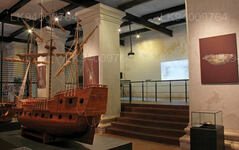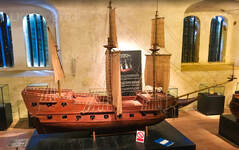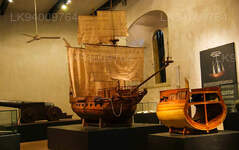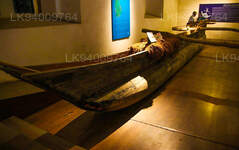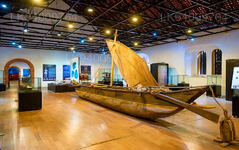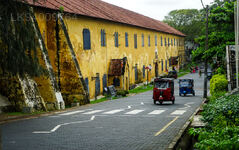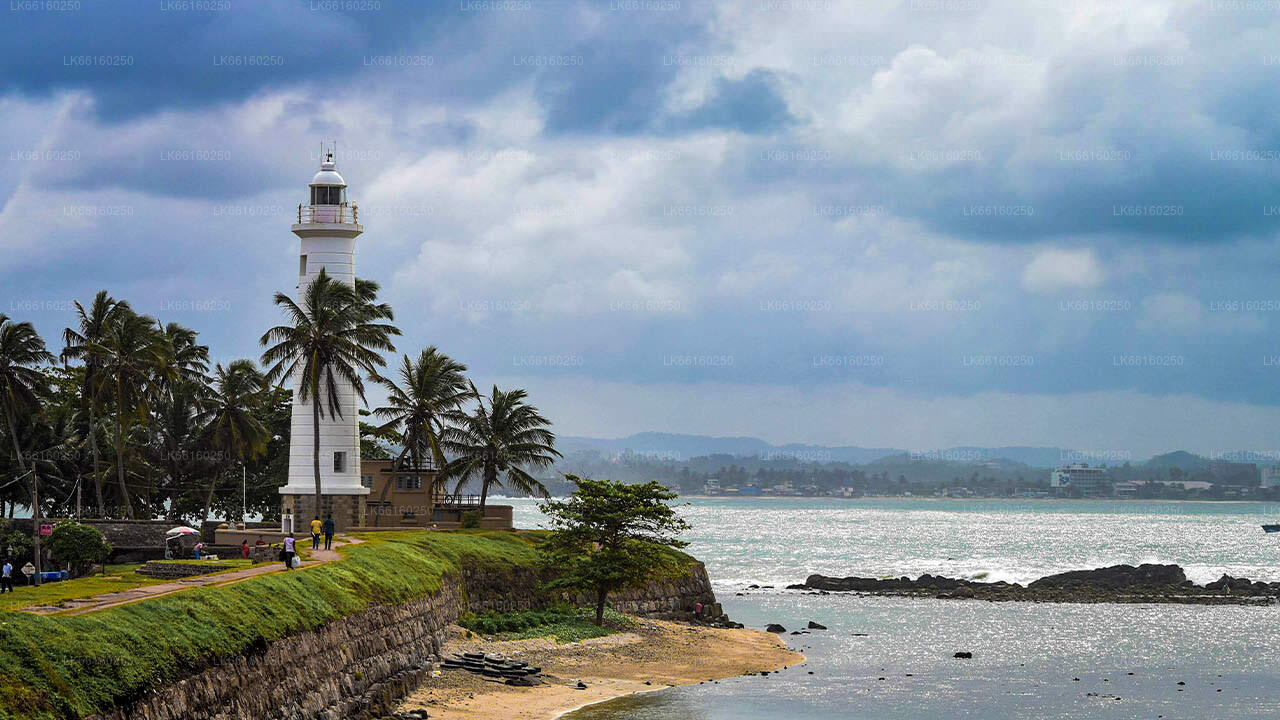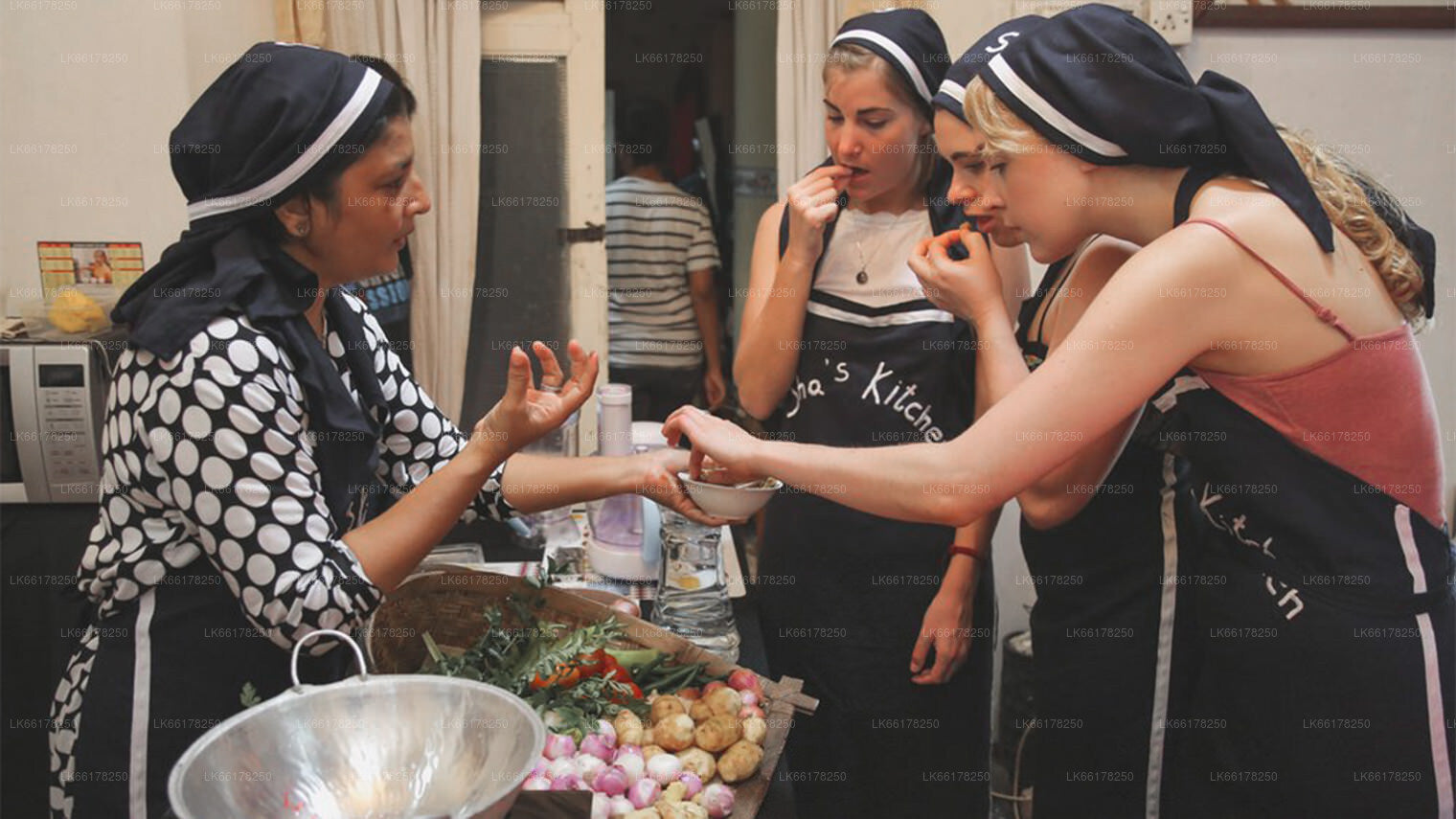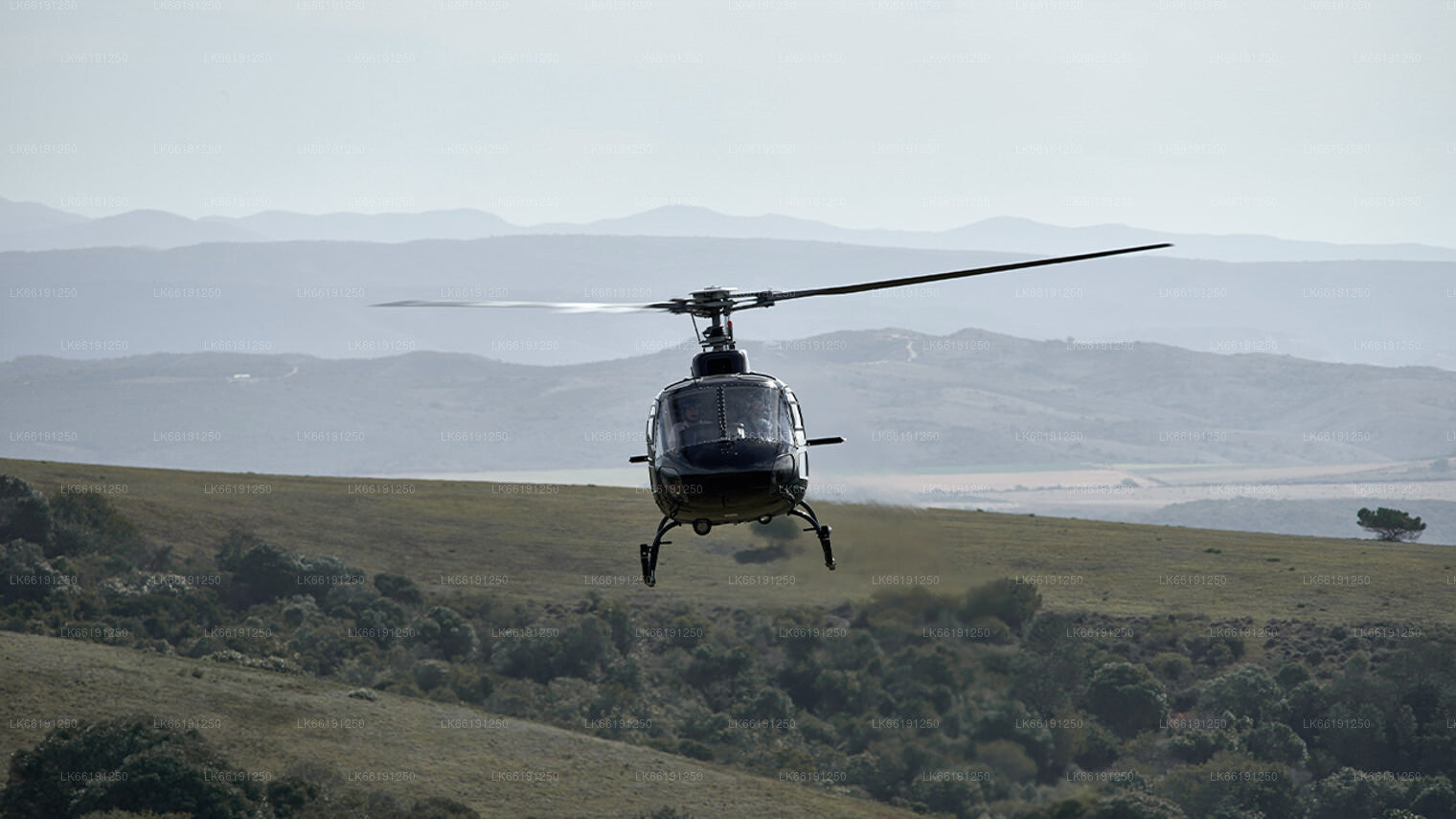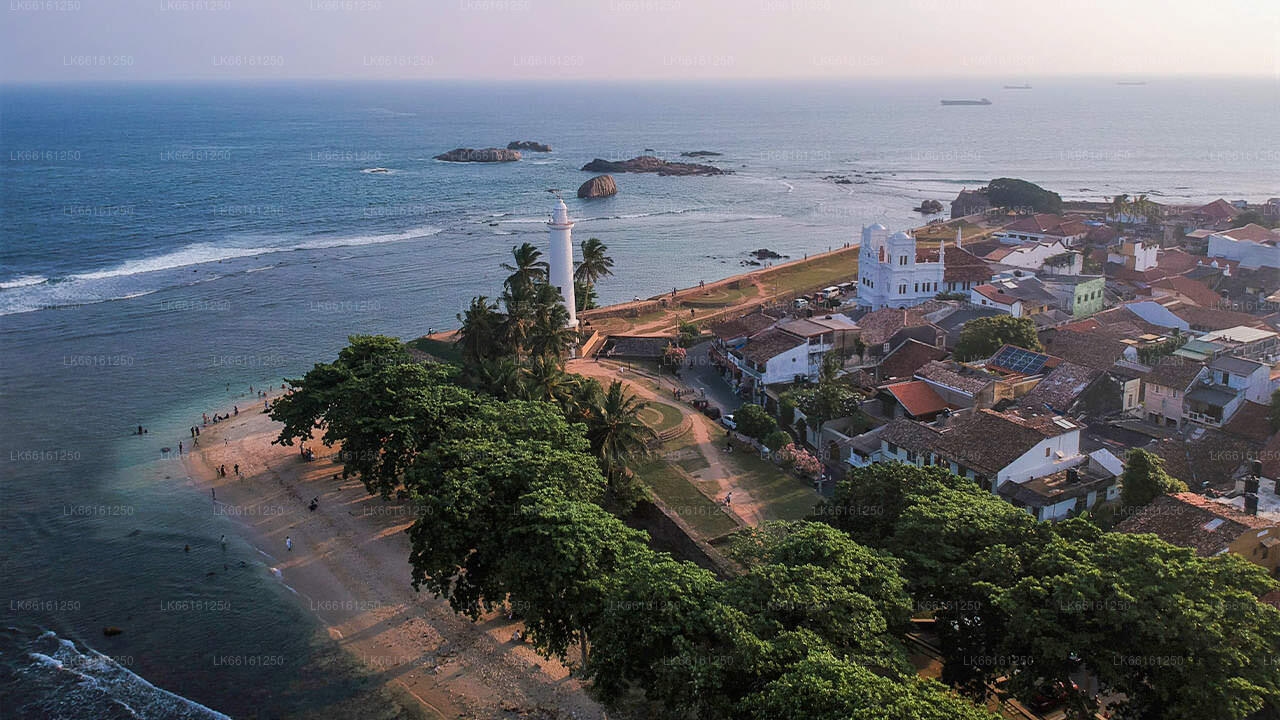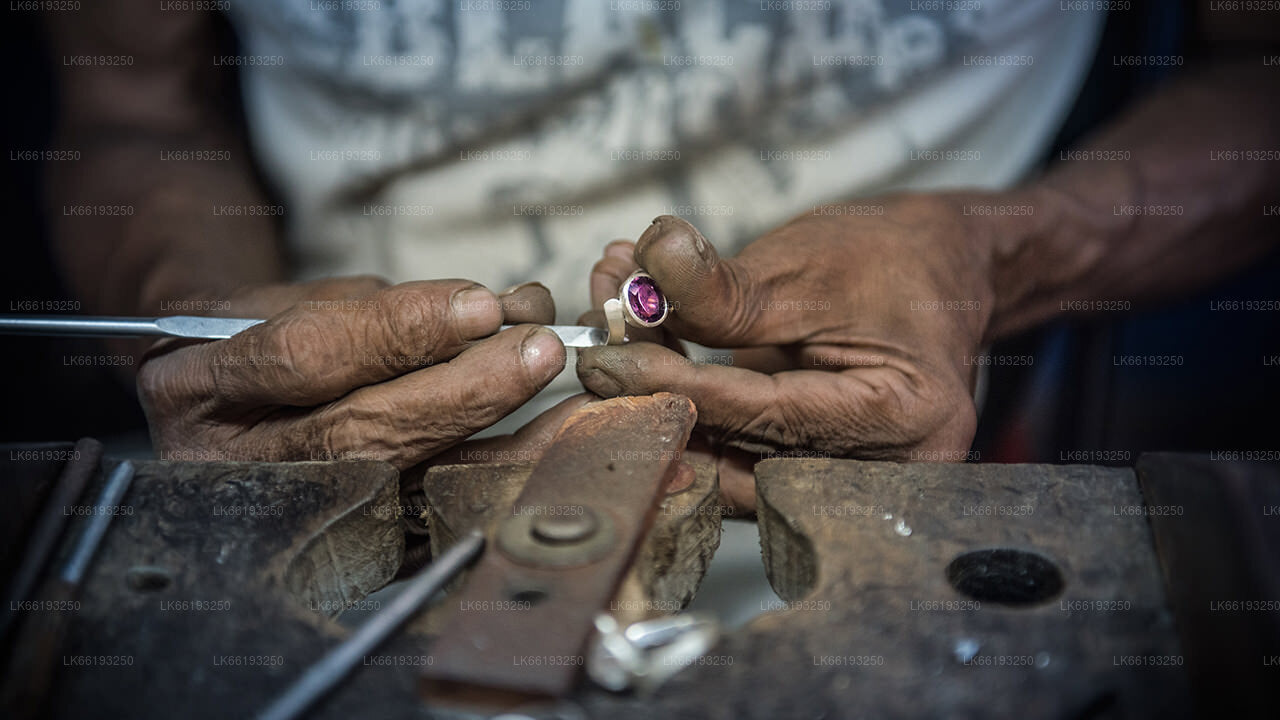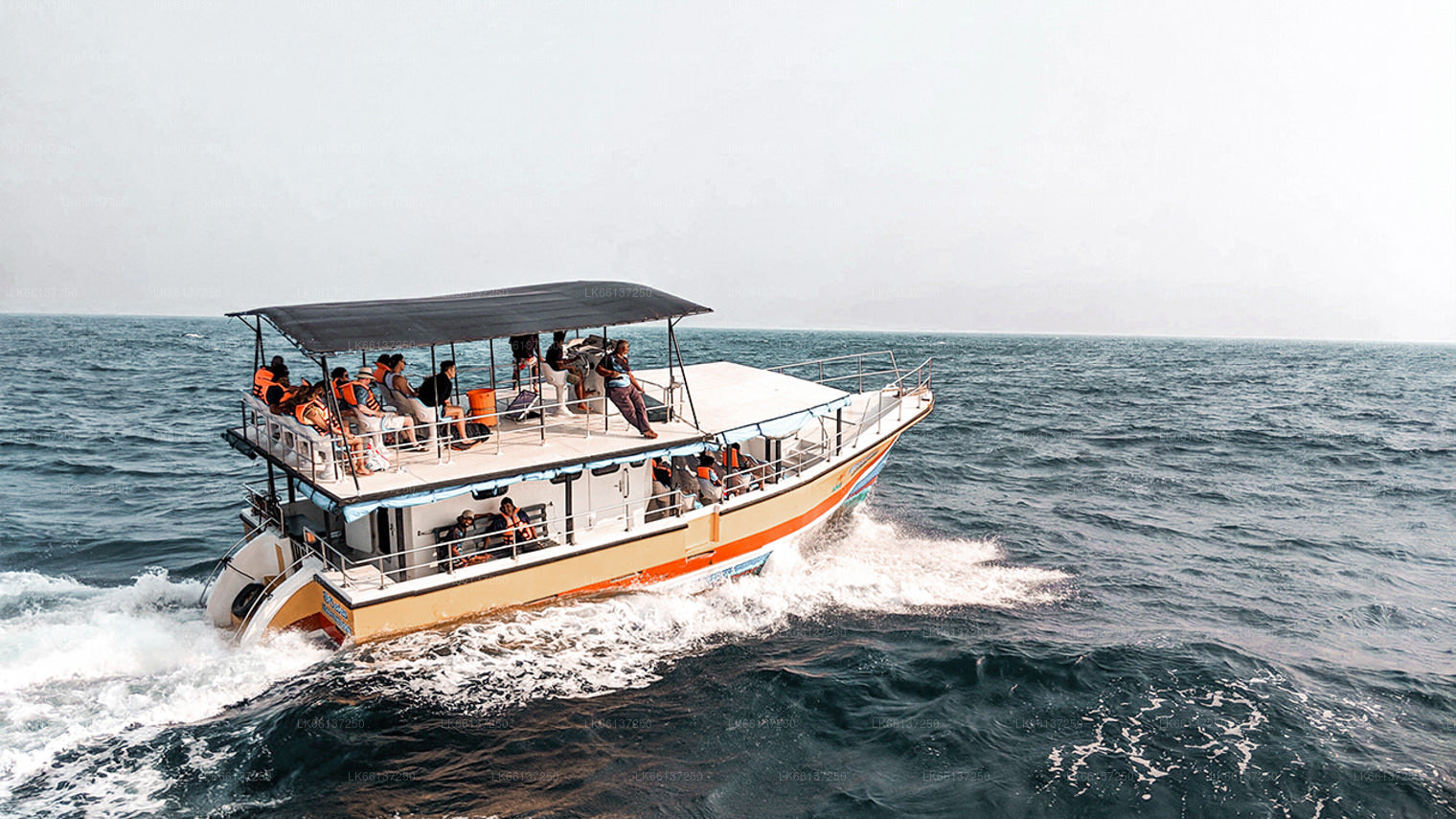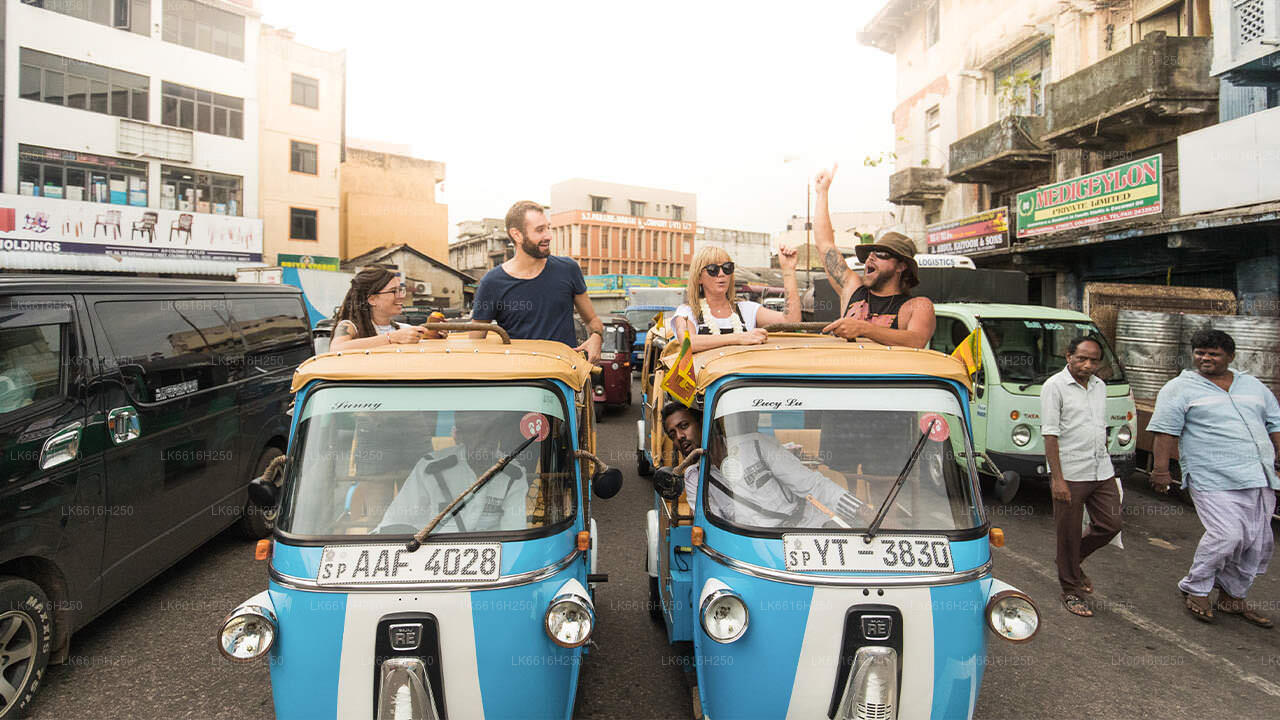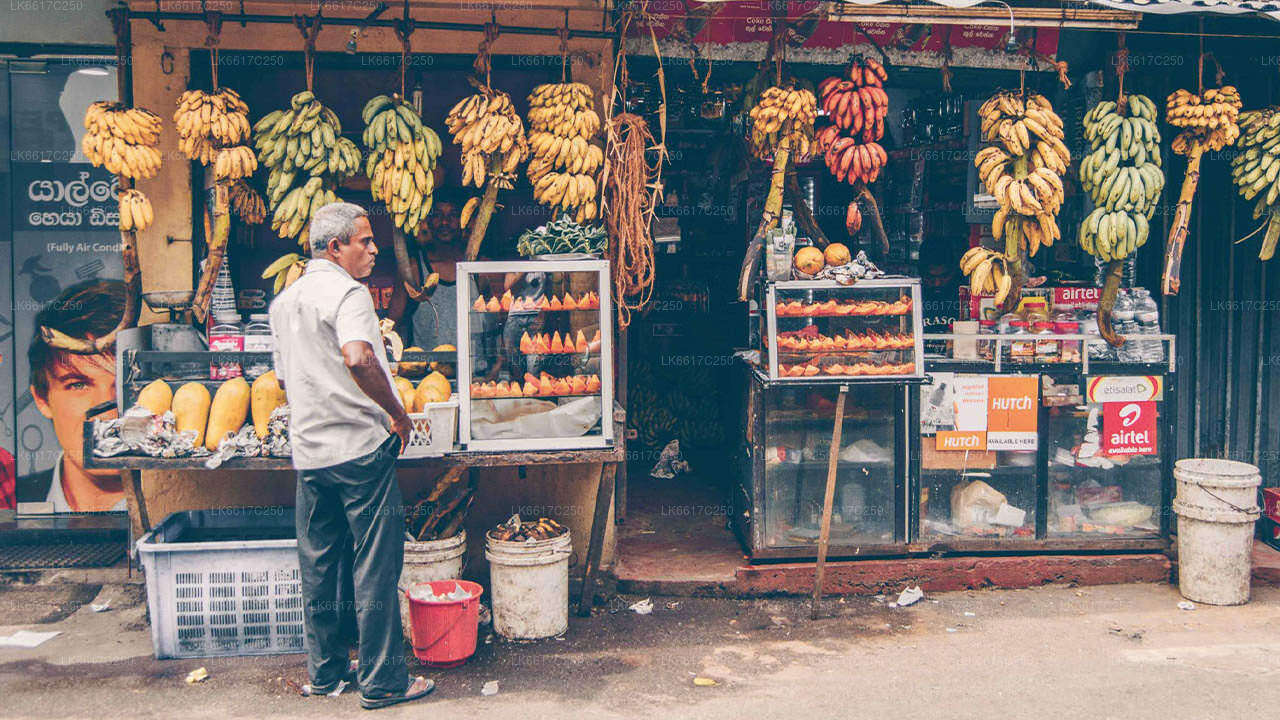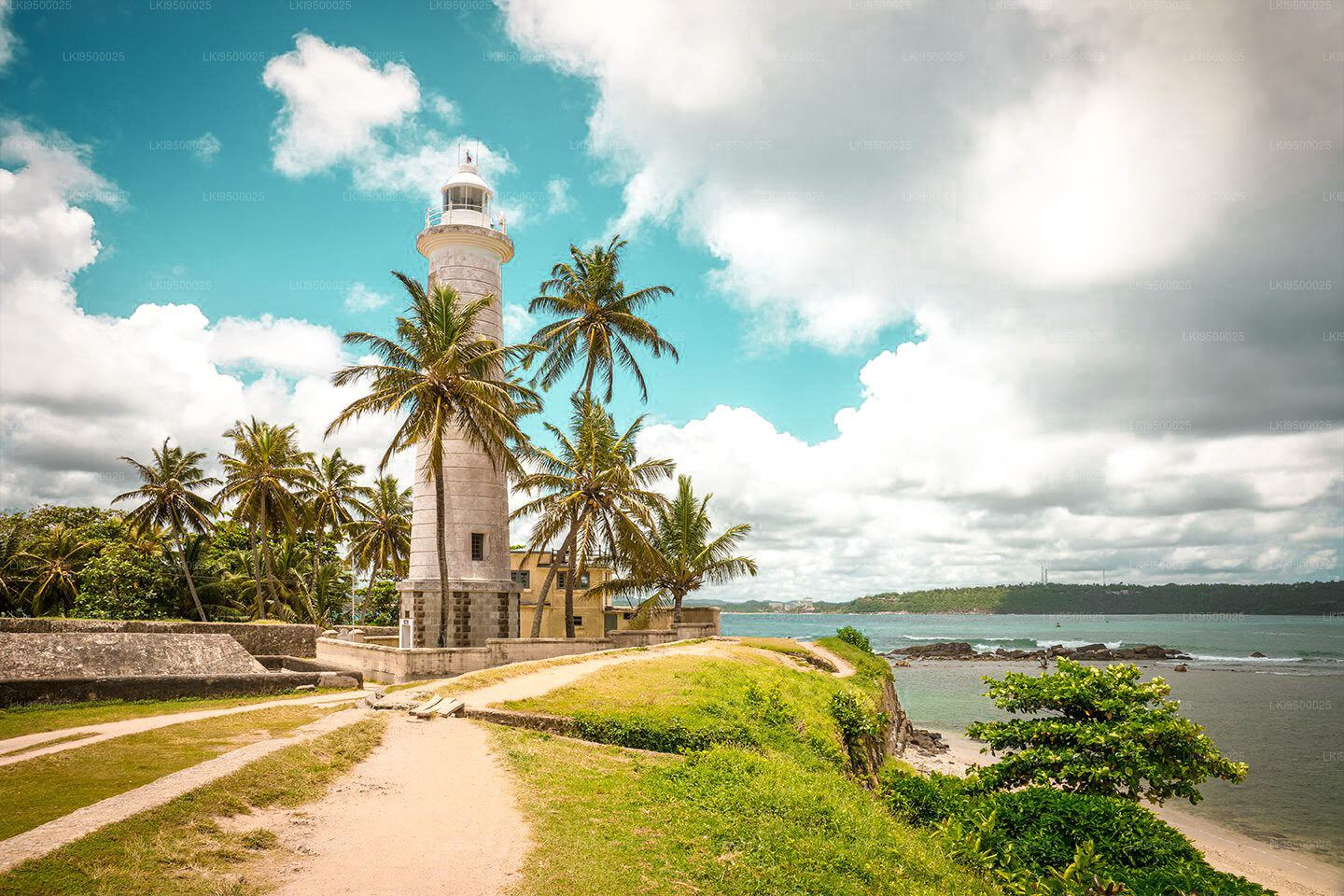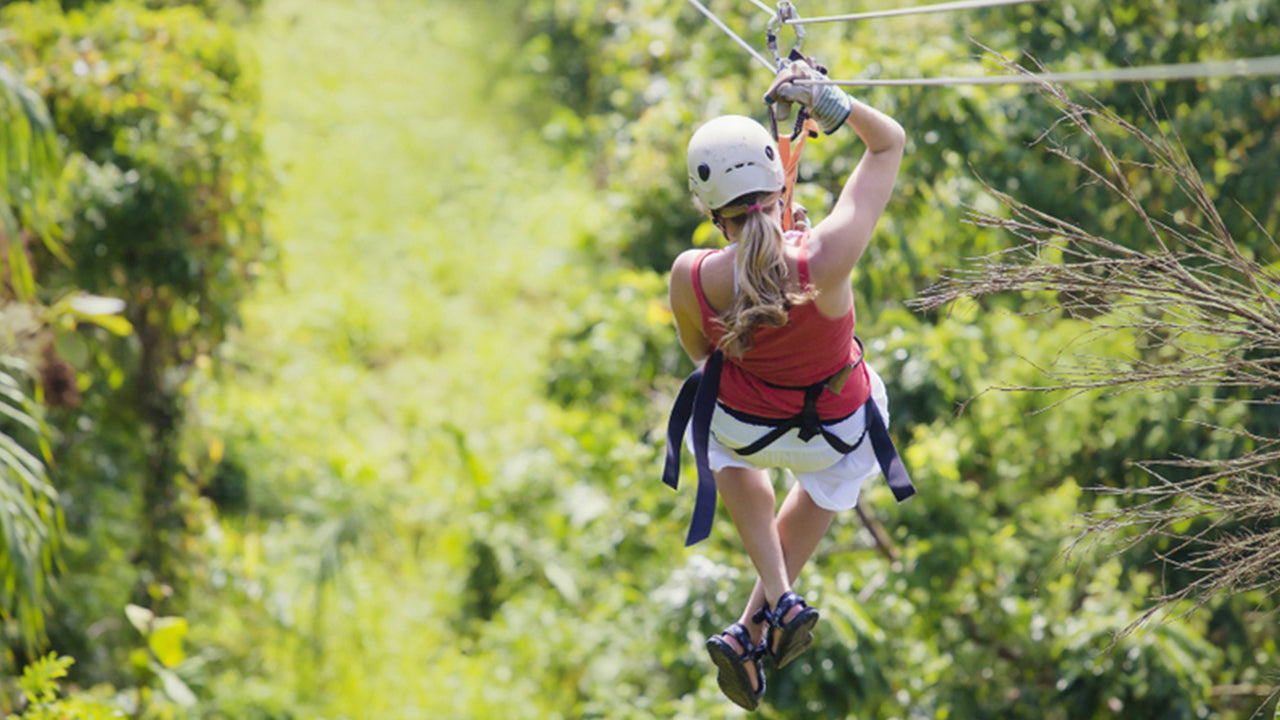
Galle City
Galle, a charming coastal city in Sri Lanka, boasts a rich history and vibrant culture. Its iconic Dutch Fort, a UNESCO World Heritage Site, stands as a testament to colonial influence. Explore pristine beaches, immerse in cultural festivals, and savor local cuisine amidst the old-world charm of Galle.
National Maritime Museum Galle
The National Maritime Museum of Galle is a beautiful piece of old Dutch architecture filled chockfull of nautical and marine marvels, dug up from the sea and showcased here. The building has a long and interesting history that is well worth elaborating on.
History
Over 400 years ago, Sri Lanka fell to foreign invasions. Lands ruled by various royals and nobles were conquered after bitter wars, where rivers of blood ran. Religious and cultural symbols were burned to make way for the those of the invaders, the war-loving Portuguese. They made Galle their base. But their empire barely lasted for a century before they were succeeded by their conquerers, the profit seeking Dutch. These new invaders took over all the most profitable ports of Sri Lanka and used them to further the Dutch East India Company (or VOC as it was known then) that traded goods from all over the world. Sri Lanka, or Ceylon as it was called then, was a key point in their shipping routes, being practically smack-dab in the centre of the world and surrounded by the ocean.
Galle has always been a major harbor, visited by ships and traders from across the globe for several millennia. As such it did not escape the clutches of the Dutch traders who put profit before all else. It served as their main base of operations. Unlike their Portuguese counterparts, the Dutch preferred not to bring areas under control by war and cruelty. They instead built up a very solid stone fort with three protective bastions and high ramparts, and then created a prosperous city within. Their buildings were beautifully made, and their shops had many unique unseen things. Most of all, the locals found that they could trade with them to some extent and make money. This encouraged the people to cooperate with them, though there were many areas that were not under Dutch control.
The fort had its man entrance in the western ramparts. And just beyond the imposing Gatehouse were a long strip of elaborately built Warehouses constructed in 1671. These spacious structures were used to store the goods that traders brought in, along with necessary food, weapons and other goods.
However, in the 18th century, nearly a hundred years after the Dutch took control of Ceylon, the British Empire began a storm of conquering. They defeated the Dutch and took over Ceylon, ruining any hopes that the Ceylonese had of freedom at that time. Under their rule, the entire island was conquered – whether by force or persuasion. Even those stray struggling free groups, who had managed to still stand under the other two invasions, fell under intense combat with highly trained and better equipped troops. Therefore, they were able to choose wherever they liked as their base, unlike the Portuguese and Dutch.
They chose Colombo as their base, and Galle slowly lost its importance. While ships of traders still visited the harbor, they were not as often or as large scale; preferring to do their trade in the harbor of the capital – Colombo. The British also changed the location of the main entrance in the Galle Fort, to suit their own needs. The new main entrance was created in the northern (main) ramparts in 1873. They also made their own warehouses separately. With that, the original entrances and adjoining warehouses became used less and less.
In the mid 20th century, the British Empire gave independence to most of its subordinate countries. Ceylon gained freedom once again, and the foreign invaders all left. Trade slowed down, especially in the towns except Colombo, and Galle became more sedate. The warehouses near the fort’s gate were abandoned. Several decades passed.
On the 09th May 1992, the government took up the initiative to create a National Maritime Museum in the warehouses. The structures, which were barely holding on were renovated to their original state. At the time, the museum mainly focused on exhibits of sealife. There were stuffed specimen, fossils, shells, skeletons and scale models of whales, dolphins, porpoises and fish. The museum also displayed exhibits connected to sea-faring, maritime trade, fishing and relics retrieved from the 20-odd shipwrecks around Galle. Other exhibits included life sized dioramas of Sri Lankan fishing methods; a “walk along the sea floor” exhibit with natural coral beds, seaweed and deep sea fish; and an exhibit of the causes of sea pollution, coastal erosion, and solutions for these problems. It was a much welcomed location of interest in Galle at the time. But things changed in 2004.
On the 26th December 2004, Sri Lanka was heavily hit by a tsunami triggered from an undersea earthquake off the Sumatran coast (Indonesia). Galle was one of the most directly affected areas. The northern entrance gate of the Galle Fort broke down from the weight of the tsunami, releasing a flood of water into the structures within. Water rose to a level of over 2m at the National Maritime Museum, causing all the specimen and exhibits to get damaged. Many exhibits returned to the sea with the waters, and only 20% of the estimated 2390 displays were salvageable.
In 2007, the government together with the Royal Government of Netherlands, renovated the warehouse under the Sri Lanka – Netherlands Cultural Co-operation Program. The renovations were completed in 2010, and the museum officially reopened. The museum, while being on a smaller scale than the previous version of it, has a decent collection of artifacts – the number of which continues to grow.
Things to See at the Museum
- The entrance of the National Maritime Museum displays a large anchor sculpture.
- The structure of the Museum warehouse is a two storey long building, and the original entry to the fort bisects the ground floor. Above the Old Gate can be seen the British Coat of Arms; while the inside wall of the gate has an inscription with the year 1668 and the letters VOC, along with the insignia of a cock flanked by two lions
- There are two main galleries to see at the museum. The first includes the various marine vessels used in Southern Sri Lanka and exhibits on local fishing communities. The Second Gallery is focused on marine ecosystems.
- Take note of the ship’s wheel from the first warship of the Sri Lanka Navy, a Fleet Minesweeper of the Algerine Class commissioned by Vijaya on the 7th October 1949 with Lt. Cdr. Rajan Kadirgammar in command. There are also other various parts from ships to see.
- An number of old compasses and old rusty anchors from an indeterminate period.
- An oruva or dug-out out-rigger canoe, a fishing vessel commonly used by local Sinhalese fishermen from Chilaw to Hambantota since almost a millennia ago, along with the ancient mode of transport- the kattumaram, the Vallam used by Tamil fishermen in Chilaw, and the Yatra Dhoni once used by locals to travel to India and Maldives.
- There is also an excellent model of a Dutch Staaten Jacht, donated by the city of Velsen in Holland; a ship that played major role in the activities of the Verenigde Oostindische Compagnie (VOC) or Dutch East India Company During the 17th and 18th centuries.
- Take a look at the various nets and tools used by local fishermen.
- In addition you can see various relics picked up from shipwrecks around Galle, and in some cases – scale models of the wrecks and details of when they occurred. These items include maps, naval craft, ropes, earthenware, beer mugs, smoking pipes, barrels, and even old artillery guns and sailor shoes
- You can also see samples of items brought in by traders over the millennia.There is also an ancient stele left by the Chinese Admiral Zhang’s 1421 AD visit to the island. There are a number of Chinese vases on show.
- There are dioramas depicting early Sri Lankan hunter gatherers. Take note of the realistic displays of the primitives who lived on the island from 12,000 BC to 10,000 BC.
- In the second gallery, you can see skeletons from whales, fish and turtles, and various stuffed sea bird species from around the coast.
- The centerpiece are huge fiberglass displays of dugong, porpoises, dolphins and whales such as the Blue Whale, Humpback whale, Killer Whale and Bryde’s whale
- There are also collections of corals and shells from species such as Common Cowry and Xencus phyrum, along with Conus shells, Murex shells, Nautilus shells, Telescopeium shells, and Bushy Corn shells.
The National Maritime Museum is an interesting place to visit which can be reached by both foot and vehicles. There are two entrances that you can easily access it by; the upper level entry linked to the present main gate, and the lower level access which is also now used as a prominent gateway.
About Galle District
Galle is a city situated on the southwestern tip of Sri Lanka, 119 km from Colombo.Galle is the best example of a fortified city built by Europeans in south and Southeast Asia, showing the interaction between European architectural styles and south Asian traditions. The Galle fort is a world heritage site and the largest remaining fortress in Asia built by European occupiers.
Galle is a sizeable town, by Sri Lankan standards, and has a population of 91,000, the majority of whom are of Sinhalese ethnicity. There is also a large Sri Lankan Moor minority, particularly in the fort area, which descend from Arab merchants that settled in the ancient port of Galle.
About Southern Province
The Southern Province of Sri Lanka is a small geographic area consisting of the districts of Galle, Matara and Hambantota. Subsistence farming and fishing is the main source of income for the vast majority of the people of this region.
Important landmarks of the Southern Province include the wildlife sanctuaries of the Yala and Udawalawe National Parks, the holy city of Kataragama, and the ancient cities of Tissamaharama, Kirinda and Galle. (Although Galle is an ancient city, almost nothing survives from before the Portuguese invasion.) During the Portuguese period there were two famous Sinhalese poets called Andare who was from Dickwella and Gajaman Nona who was from Denipitiya in Matara District, composing poems on common man.

